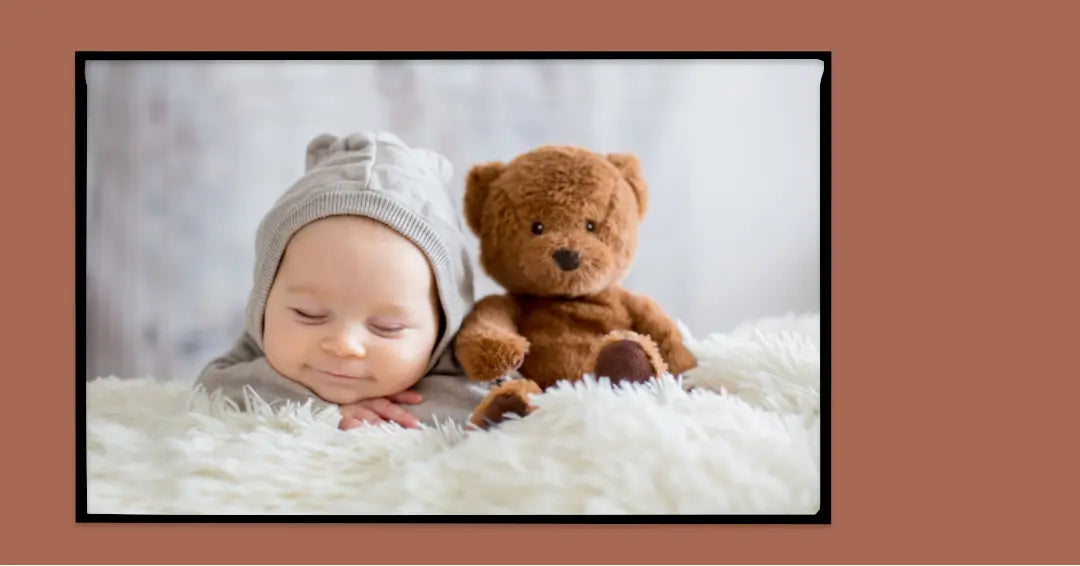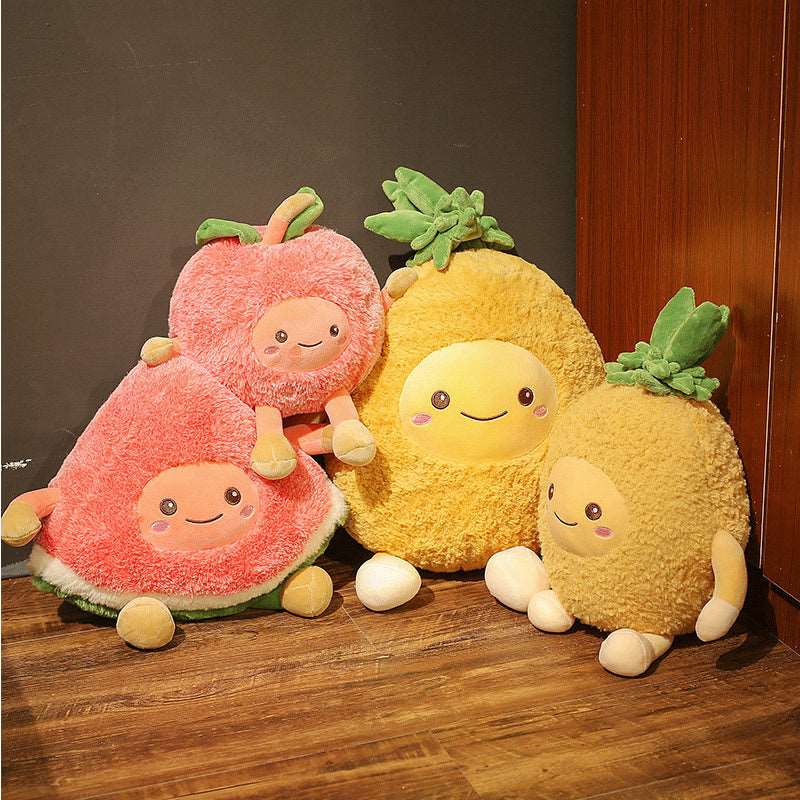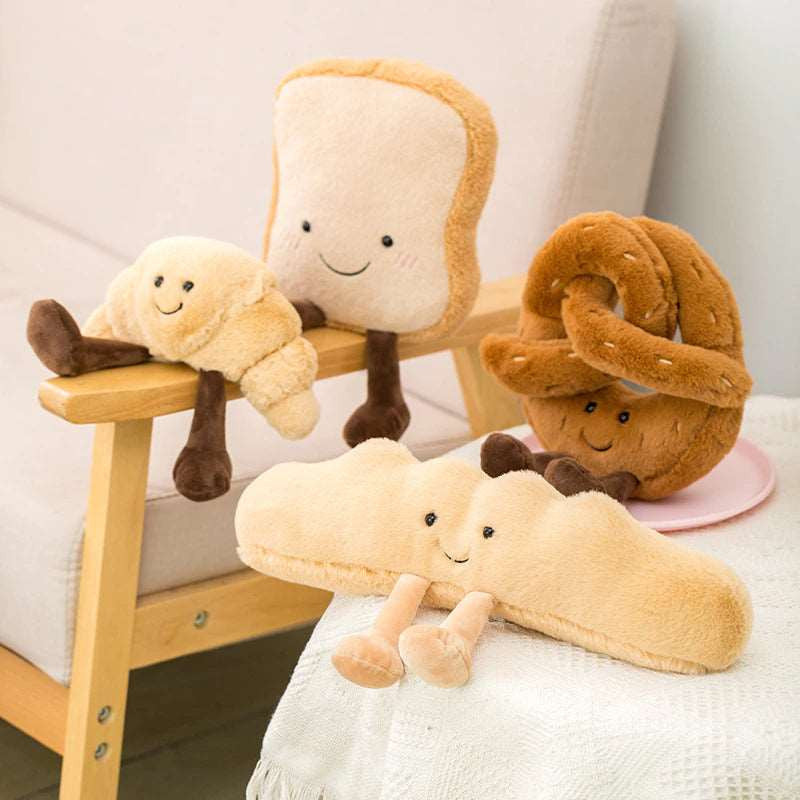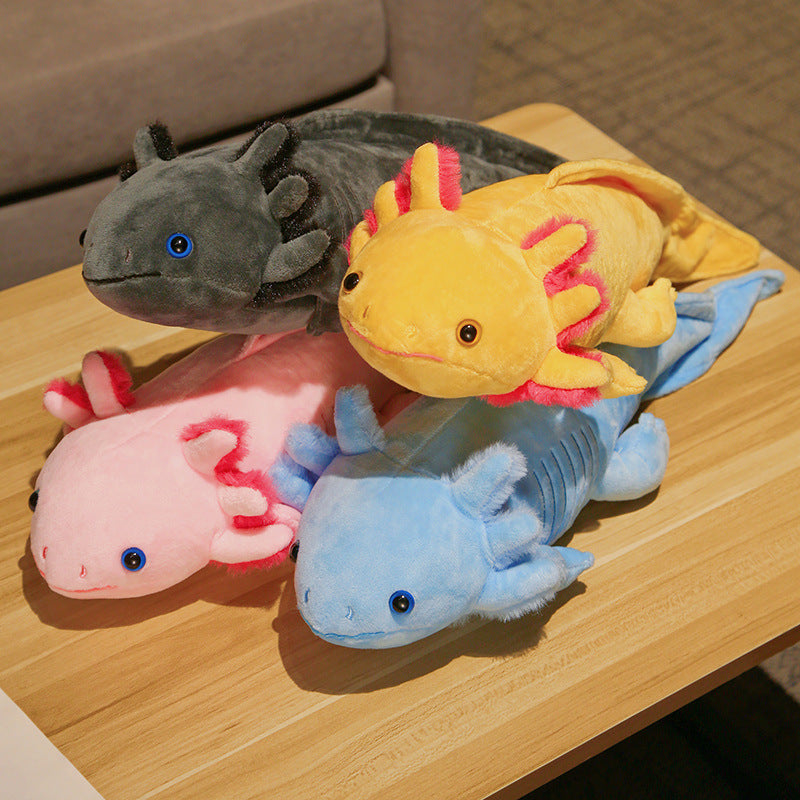

· By The Wakaii Team
How to Choose the Perfect Plushie for Your Baby
If you're a parent looking to find the perfect stuffed animal for your little one, you've come to the right place.
Let's dive into the world of plushies and discover how to select the best one for your baby.
And remember, choosing the right plushie is just the first step. The real magic happens when we see the benefits these plushies bring to our kids.
Discover the Different Types of Plushies
First things first, let's talk about the variety of plushies out there. The world of plushies is as diverse as it is adorable.
- Animal Plushies: These are a classic choice. Whether it's a fluffy bunny or a loyal dog, animal plushies are a hit with kids of all ages. They're not just cute; they can also be a fun way to teach your baby about different animals.
- Character Plushies: Think of your baby's favorite TV show or movie. Chances are there's a plushie version of their favorite character. These plushies can be a great comfort for kids, especially if they're fans of the character.
- Novelty Plushies: These are the unique ones in the plushie world. From plushies shaped like food items to ones that look like cars, novelty plushies are a fun and quirky choice.
Remember, the type of plushie you choose should align with your baby's interests and developmental stage.
Consider the Age and Interests of Your Child
When choosing a plushie for your baby, their age and interests should be your guiding factors. Here's a quick rundown:
- For Infants (0-12 months): Soft, cuddly, and easy-to-grasp plushies are ideal. Look for ones with high-contrast colors and different textures to stimulate your baby's developing senses.
- For Toddlers (1-3 years): At this stage, kids start to develop their imagination. Plushies that can be included in pretend play, like animals or character plushies, are a great choice.
- For Preschoolers (3-5 years) and Above: Kids at this age might have specific interests or favorite characters. Choose a plushie that aligns with their preferences.
Always consider your child's interests. If they love dinosaurs, a T-Rex plushie might be a big hit!
Prioritize Quality and Safety
Quality and safety are paramount when choosing a plushie for your baby. Here's what to look out for:
- High-Quality Materials: The plushie should be made of durable and non-toxic materials. Check the label for information about the materials used.
- Safety Features: Look for plushies with securely attached parts. Avoid plushies with small parts that could be a choking hazard for young children.
- Washability: Babies can be messy. Choose a plushie that's machine washable to keep it clean and hygienic.
And don't forget to wait until your child's first birthday (preferably second) before you let them sleep with their plushies. This is because the risk of Sudden Infant Death Syndrome (SIDS) drops significantly after this age.
At Wakaii, all our plushies meet high safety standards. We prioritize your child's safety and ensure our plushies are made of non-toxic, hypoallergenic materials.
Consider the Size and Weight of the Plushie
Moving on to the next important aspect - the size and weight of the plushie. This might seem like a minor detail, but it can significantly impact how much your child enjoys their new fuzzy friend.
- Size: The size of the plushie should be appropriate for your child's age and size. For infants and toddlers, smaller plushies are easier to hold and cuddle. As your child grows, they might enjoy hugging larger plushies.
- Weight: The plushie should be lightweight enough for your child to carry around comfortably. Heavy plushies can be difficult for small children to handle and might not be as cuddly as lighter ones.
Choosing a Plushie for Special Needs
If your child has allergies or sensory issues, choosing the right plushie becomes even more critical. Here are some tips:
- Hypoallergenic Materials: If your child has allergies, look for plushies made of hypoallergenic materials . These plushies are less likely to trigger allergic reactions.
- Sensory Considerations: Some children are sensitive to certain textures. In such cases, choose plushies made of soft and smooth materials. Some plushies also offer sensory stimulation with different textures and sounds.
At Wakaii, we understand the importance of catering to all children's needs. That's why we offer a range of hypoallergenic and sensory-friendly plushies.
Consider Your Budget
Let's face it - budget plays a role in our choices. But remember, a higher price tag doesn't always mean better quality. Here's how to get the best bang for your buck:
- Compare Prices: It's always a good idea to compare prices across different stores. At Wakaii, we strive to offer competitive prices for high-quality plushies.
- Read Reviews: Customer reviews can give you an idea of the plushie's quality and durability. They can help you decide whether the plushie is worth the price.
- Look for Sales and Discounts: Who doesn't love a good deal? Keep an eye out for sales and discounts to snag your favorite plushies at a lower price.
Oh did we forget to mention our ongoing sale at Wakaii? We have up to 50% off storewide this summer!
We believe that every child deserves a wonderful plushie, regardless of budget. That's why we offer a wide range of plushies at reasonable prices.
Choose the Right Store
Finally, let's talk about where to find these cuddly companions. While there are many places to buy plushies, not all stores are created equal.
- Physical Stores: Physical stores allow you to feel the plushie's texture and assess its quality. However, they might not have as wide a selection as online stores.
- Online Stores: Online stores like Wakaii offer a vast selection of plushies. You can browse different categories, read reviews, and compare prices all from the comfort of your home.
Conclusion
Choosing the perfect plushie for your baby involves considering various factors, from the type of plushie to its size, quality, and safety features. It's about finding a plushie that your child will love and cherish.
Remember, a plushie isn't just a toy. It's a friend, a comfort object, and a tool for imaginative play. So take your time, consider your options, and choose a plushie that will bring joy to your child.
And that's a wrap on our comprehensive guide to choosing the perfect plushie! We hope you found it helpful and informative.
Before you go, subscribe to our newsletter for 15% off on your next order! Not only will you get a sweet deal, but you'll also stay updated on our latest collections and special offers. So why wait?
Join the Wakaii family today and bring home the perfect plushie for your little one. Happy shopping!
FAQs
There are various types of plushies available, including animal plushies, character plushies, and novelty plushies.
For infants, soft, cuddly, and easy-to-grasp plushies are ideal. Toddlers start to develop their imagination, so plushies that can be included in pretend play are a great choice. For preschoolers and above, choose a plushie that aligns with their specific interests or favorite characters.
The plushie should be made of durable and non-toxic materials. Look for plushies with securely attached parts and avoid ones with small parts that could be a choking hazard for young children. Also, choose a plushie that's machine washable.
The size and weight of the plushie should be appropriate for your child's age and size. For infants and toddlers, smaller plushies are easier to hold and cuddle. As your child grows, they might enjoy hugging larger plushies. The plushie should also be lightweight enough for your child to carry around comfortably.
If your child has allergies or sensory issues, look for plushies made of hypoallergenic materials. These plushies are less likely to trigger allergic reactions. For children sensitive to certain textures, choose plushies made of soft and smooth materials. Some plushies also offer sensory stimulation with different textures and sounds.



